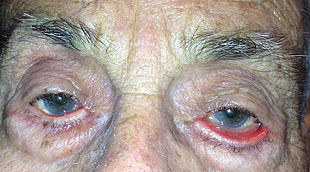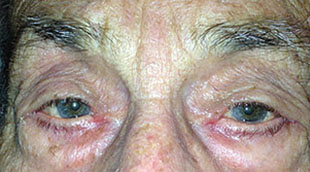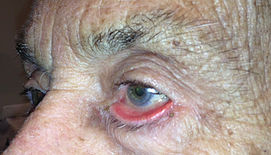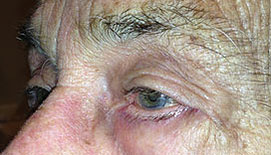Ectropion (Turned out eyelid)
The results of ectropion repair depend on each patient's symptoms, unique anatomy, appearance, goals and ability to adapt to changes. By correcting the droopiness of the lower eyelid, the surgery typically improves tearing and mucous discharge. Ectropion repair does not improve blurred vision caused by problems inside the eye, or by visual loss caused by neurologic disease behind the eye.
There are several options for anesthesia to make you comfortable during surgery. Ectropion repair is frequently done in the office with just local anesthesia (medicine injected to numb the area). If patients desire some relaxation oral medication can be prescribed which the patient can pick up from his/her pharmacy and take before the procedure. If additional sedation is preferred, your ectropion repair may be scheduled at an outpatient surgery center. At a surgery center, intravenous sedation (also known as conscious or twilight sedation) can be offered. Less commonly, or if eyelid surgery is combined with other surgery, you may be given deeper anesthesia that makes you unconscious for the surgery (general anesthesia).



